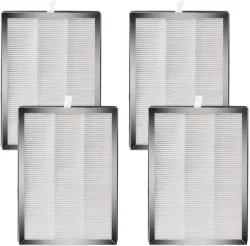Applications of activated carbon filters
2024-02-19
Activated carbon filters, also known as activated charcoal filters, are widely used for air and water purification due to their excellent adsorption properties. Activated carbon is a form of carbon that has been processed to have a large surface area, providing more sites for adsorption of contaminants. Here are key features and applications of activated carbon filters:
Key Features:
1. High Surface Area: Activated carbon is characterized by a high surface area per unit volume, which is achieved through processes like chemical activation or steam activation. This large surface area enhances the adsorption capacity of the carbon.
2. Adsorption Properties: Activated carbon has the ability to adsorb (attract and hold onto) various substances, including organic compounds, chemicals, and impurities, through physical and chemical forces.
3. Pore Structure: The activated carbon structure contains a network of pores, including micropores, mesopores, and macropores. This diverse pore structure contributes to the effectiveness of adsorption for a wide range of molecules.
4. Versatility: Activated carbon can be derived from various carbonaceous materials, such as coconut shells, wood, peat, or coal. The choice of raw material can impact the properties of the activated carbon.
5. Regeneration: Activated carbon can be regenerated through thermal treatment, allowing it to be reused after reaching its adsorption capacity. This regeneration process involves heating the carbon to release or decompose the adsorbed substances.
Applications:
1. Water Treatment:
- Removal of Organic Contaminants: Activated carbon filters are used in water treatment to remove organic contaminants, taste, and odor compounds. They are commonly found in point-of-use and point-of-entry water filtration systems.
- Chlorine Removal: Activated carbon is effective in adsorbing chlorine and chloramine from water, improving taste and odor.
- Removal of Volatile Organic Compounds (VOCs): Activated carbon filters are used to eliminate VOCs from water, providing a solution for the purification of drinking water and industrial wastewater.
2. Air Purification:
- Indoor Air Quality: Activated carbon filters are used in air purifiers and HVAC systems to adsorb airborne pollutants, including volatile organic compounds, odors, and gases.
- Exhaust Systems: Activated carbon filters are employed in exhaust systems to capture and remove odorous and toxic substances before releasing air into the environment.
3. Industrial Applications:
- Gas Purification: Activated carbon is used in gas masks and industrial processes for the removal of toxic gases and fumes.
- Air and Vapor Phase Treatment: In industrial settings, activated carbon filters are utilized for air and vapor phase treatment to control emissions and remove contaminants.
4. Medical and Pharmaceutical: Activated carbon is used in medical applications, such as kidney dialysis machines, to remove impurities from blood. It is also used in pharmaceutical manufacturing for purifying process gases and liquids.
5. Gold Recovery: Activated carbon is employed in the gold mining industry for adsorbing gold from cyanide leach solutions in the carbon-in-pulp and carbon-in-leach processes.
When selecting activated carbon filters, considerations include the specific contaminants to be removed, flow rates, and the required contact time for effective adsorption. Regular monitoring and replacement of activated carbon filters are essential to ensure continued effectiveness in purification applications.



